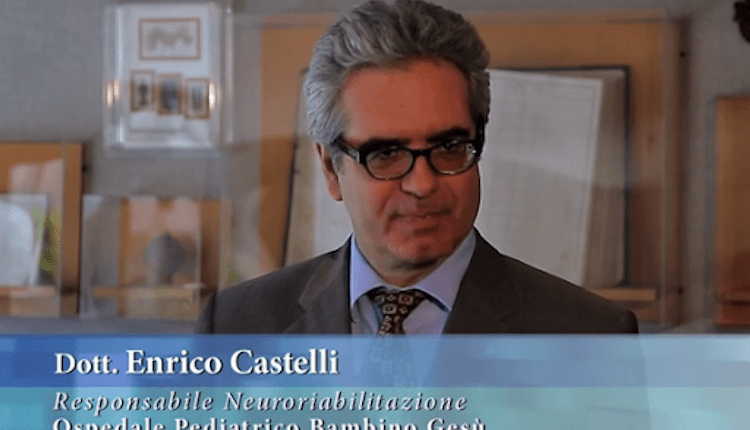
Children healthcare: the discovery of Bambino Gesù Hospital on kids motor rehab
Children Healthcare – Technology and innovation are the focus for Bambino Gesù Hospital in Rome and are used in the treatment and motor rehab in children with disabilities.
On Children healthcare today we talk about motor rehab in kids with disabilities. To better understand the advantages of these latest-generation machines, Professor Enrico Castelli, director of the department of intensive neurorehabilitation and robotics at Opbg reports what follows.
Motor functionalities rehab in children with disabilities due to neurological or congenital damage through the most innovative technologies is a reality at the Bambino Gesù hospital.
“In the last ten years, technology has allowed us to provide small patients with disabilities with technologies to support the motor rehab of these children. We have equipment for the rehab of the path and for the facilitation of axial control, that is head, neck, pelvis and robot for the rehabilitation of the shoulder, elbow, forearm and hand. We are also equipped with virtual reality systems to facilitate control and hand-eye coordination. The advantages are tangible in various areas.
First of all, the robotic rehabilitation intervention is part of a wider rehabilitation project for the child that is always personalized. The robot itself does not solve the problem of the small patient but it is a tool that in the hands of the rehabilitator gives greater value to the treatment. Just think of the child’s motivation, we have patients who have disabilities resulting from perinatal damage, i.e. from birth and when they grow up they are tired of doing rehabilitation and this makes them demotivated. On the contrary, motivation is important for any learning process, so the provision of robotic devices is especially useful to rehab motivation and make them live this type of intervention as a game is the first advantage of these systems”.
Hirob, the robotic horse that is only the last machine in the hospital. What does it do and does its playful appearance help the child during the treatment?
“The playful aspect is important because when we take care of children, the rehabilitative intervention allows a playful view of the treatment, otherwise the smaller the child is or the more compromised he is, from the neurological point of view, the more he does not cooperate. The Hirob system is still unique in Italy. In essence, the machine is able to replicate the movements of a horse. In fact, there is a saddle on which the child is placed. In this way the patient does hippotherapy but in this case, unlike what can be done in hippotherapy centers, in this way the treatment is safe because the saddle is placed at floor level and then being a robot allows you to select all the variables. It is possible to decide the movements in the various planes, the speed, the entity of the movement and it is possible to work on one plane instead of three at the same time. In this way, we make it easy for the child to control the head, trunk and pelvis as well as the central part of the body including arms and legs. So it is important as a starting point for the control of the upright station of the upper limb.
Children healthcare – What movements help to replicate and what results do they allow the little patient to achieve?
“The Lokomat is a robotic system that is worn and adapted to the child’s size. In practice, it supports, guides and facilitates the child’s walk on the treadmill that runs in tune with the child’s movements. There is no alternative to these systems when there is a compromise in the path of a certain magnitude, also because by putting more therapists around the child it is impossible to have control of one limb with respect to the other, maintain synchrony and movement. Only a robotic system can do this and the results are interesting.
This year we published a study in collaboration with colleagues from the Istituto Medea Bosisio Parini that collected data from 183 children treated with this system and we have found significant results in terms of walking speed, step length, the synchronicity between the two sides and above all endurance, endurance, or how long can children walk, thus increasing their autonomy. The Re-Walk system is a wearable exoskeleton and is useful for children and adults who have had a complete spinal cord injury and have therefore lost the use of their legs. It replaces the function of walking.”
Children healthcare – What is the balance of this experience and is a service to be enhanced in your opinion?
“During the lockdown, all the services in the area remained closed and even our hospital maintained only the day hospitals and some essential outpatient clinics. For this reason, all parents with a child with disabilities found themselves without any reference either for the rehabilitative intervention or for more specific requests about therapies and drugs. For this reason, we have activated this telephone service to provide guidance on both pharmacological aspects and the use of guardians. Many people have called us and have appreciated this service which I believe should continue in the future even if we hope that the COVID-19 infection will soon be left behind us. In any case, it is important to make this information available to parents when the problem arises and to be time to respond to any request to the family of a child with a disability”.
SOURCE


